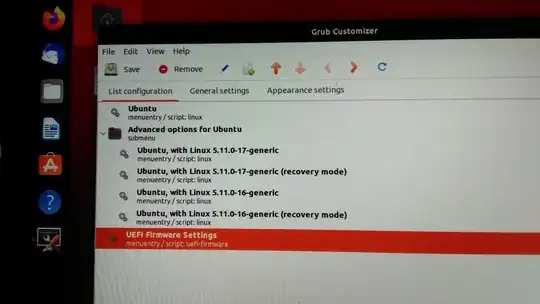I have now three hard disks in my desktop. A Samsung SSD that boots Win7, a Toshiba HDD which is not bootable, and yesterday I added a Crucial SSD which boots Ubuntu 21.04.
If I now simply start my computer, Linux on the Crucial will boot..
If at startup I press F11 this allows to choose between these three and surprisingly, a non-existing fourth named "Ubuntu"(?). If I click on the Samsung then Windows will boot, if I click on the Crucial (or Ubuntu) Ubuntu will boot. As you can see on the left of the two pictures:

The right picture shows what I get when press F2, the boot order setting at the ASRock Motherboard, while booting, I only get to "choose" between the identical Crucial and Ubuntu...
I want the Samsung to boot Win7 as default. From what I have heard, I have to do this in Ubuntu, and I know absolutely nothing about it. How do I make this change?
It was suggested to use grub-customizer for this, but as the picture shows, it does not even see the Samsung disk with the Windows.

My Win7 is not an UEFI, it is a legacy installation. Could that be the reason?